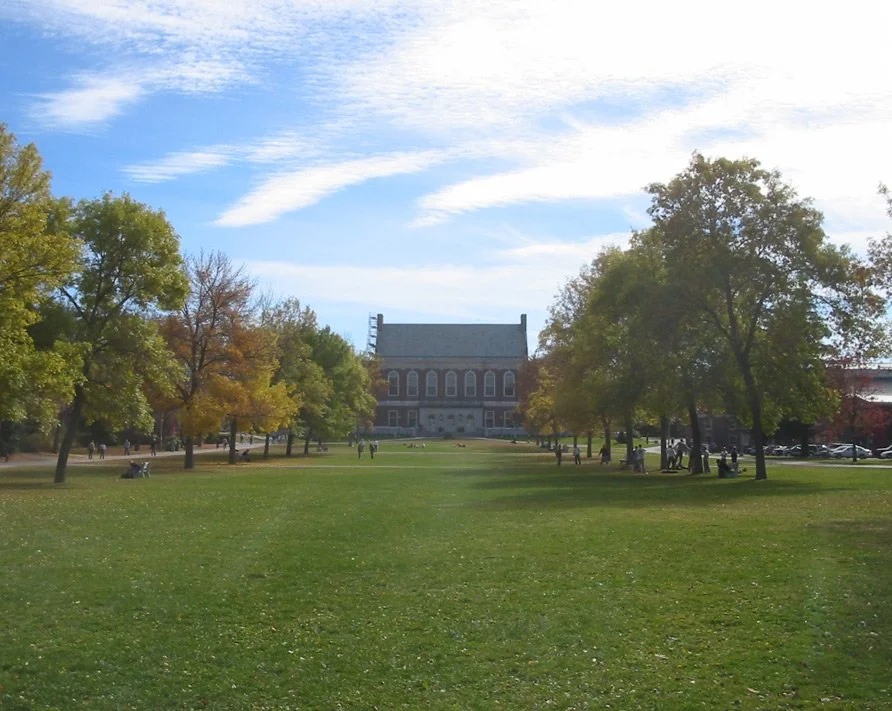
Using 3D printing in building neighborhoods
Home built using University of Maine 3D printer and wood.
Edited from a New England Council report
“The University of Maine has created a 3D printer that could be used to build a house, cutting construction times and costs. Now, it is one of the largest in the world and could be capable of being used to build entire neighborhoods. The recently publicized printer is four times the size of the original one, commissioned less than five years ago, and can use bio-based materials (such as wood from Maine’s big forestry sector) to address affordable-housing issues as well.
“This new massive printer ‘opens up new research frontiers to integrate these collaborative robotics operations at a very large scale with new sensors, high-performance computing, and artificial intelligence,’ said Habib Dagher, director of the university’s Advanced Structures & Composite Center, at the university’s flagship campus, in Orono, where UMaine houses its printers.
The French connection
Percentage of the population, by county, speaking French at home in New England. This information does not discern between specific demographics of New England French, Quebec French, and dialects of immigrants from France. This does not include French Creole languages, which are spoken by a sizable population in southern New England urban centers. Percent of residents speaking French (2015) 10–15% 5–10% 1–5% 0.5-1%
In Maine, working on virtual reality and self-driving cars
Researcher with a virtual reality headset.
— Photo by ESA, CC BY-SA IGO 3.0
Edited from a New England Council (newenglandcouncil.com) report
“Researchers at the University of Maine’s Virtual Environment and Multimodal Interaction Lab (VEMI) are working on cutting-edge technology to contribute to the development of self-driving cars and virtual reality. The VEMI lab recently won a grant from the U.S. Department of Transportation’s Inclusive Design Challenge for $300,000 to fund research for autonomous vehicles.
“The VEMI lab was founded by Dr. Rick Corey and Dr. Nick Giudice in 2008 with the idea of creating a space that students and faculty from different disciplines can come together to create technology-based solutions to global problems. With this new federal funding, VEMI lab scientists will create a ride-hailing app targeted at helping older adults and the visually impaired. The app would use electric cars that would be maintained at a central hub and use a payment system based on membership rather than a per ride. The autonomous vehicles would help older adults and people who are visually impaired access safe rides in such areas as rural Maine where access to public transportation or ride shares can be hard to find.
“Dr. Corey said, ‘[W]e don’t want to be constrained to the classroom or the traditional lab. We’re in the business of trying to make the world a slightly better place, and to break down the barriers between technology and people.’’’
At the University of Maine’s flagship campus, in Orono, on Marsh Island
— Photo by Jalnet2
And stick around
“Hug and kiss whoever helped get you – financially, mentally, morally, emotionally – to this day. Parents, mentors, friends, teachers. It you’re too uptight to do that, at least do the old handshake thing, but I recommend a hug and a kiss. Don’t let the sun go down without saying thank you to someone, and without admitting to yourself that absolutely no one gets this far alone.’’
Stephen King (born 1947), hugely successful novelist, and a Maine native, in his University of Maine at Orono (the flagship campus of the university) commencement address in 2005.
And:
King has chosen to live in his native state for most of his life. His main home is in nearby Bangor. So he asked the graduates to stay in the Pine Tree State.
''This can be home if you want it to be. If you leave, you will miss it, so you might as well skip the going away part."
Stephen King’s house in Bangor, built in 1858
Richard Pattenaude: How colleges can make the most of COVID-19 relief
From The New England Journal of Higher Education, a service of The New England Board of Higher Education (nebhe.org)
BOSTON
In the final days of 2020, Congress gave the country a long-overdue Christmas present with the passage of a new COVID-19 relief bill. Known as the Coronavirus Response and Relief Supplemental Appropriations Act (CRRSAA), the bill is a whopping 5,500 pages long. But for higher education institutions, the real action starts on Page 1872 with the Higher Education Emergency Relief Fund (known as HEERF II).
How should institutions use this funding? Providing immediate financial support to students is critical, of course—but so is strengthening the institution they attend. Beyond simply replacing lost tuition or room and board funds, some institutions are exploring creative ways to use the funds in ways that increase the effectiveness of their online programs—and provide better support for students in the process.
Included in the CRRSAA is $82 billion for schools, just over one-quarter of which ($22.7 billion) is earmarked for higher education through HEERF II. That represents a 50 percent increase over the amount allocated to higher ed by the original CARES Act last spring. As with the last relief bill, the vast majority of this money ($20.2 billion) will be distributed directly to public and nonprofit institutions, using a complex formula that takes into account factors like student headcount, full-time enrollment and Pell eligibility. In this new bill, institutions will actually be receiving more money than they did in the first stimulus—but they are required to spend the same amount of money on student aid as they spent last time. That translates to a far greater percentage of funds available for other institutional priorities.
With that in mind, once institutions have received their latest relief, what can they do with it? Here’s a rundown of the actual requirements of the bill, as well as some perhaps surprising examples of how institutions have put their relief funding to effective use.
This time around, it appears that there’s more flexibility in the way that institutions can spend these dollars. Specifically, the bill states that institutions may use the funds to:
1) defray expenses associated with coronavirus (including lost revenue, reimbursement for expenses already incurred, technology costs associated with a transition to distance education, faculty and staff trainings, and payroll);
2) carry out student support activities authorized by the HEA that address needs related to coronavirus (for example, institutions have used these funds to purchase laptops for low-income students, provide hot spot or internet service funds, cover costs for computer set up and reimburse PPE expenditures for nursing students); or
3) provide financial-aid grants to students (including students exclusively enrolled in distance education), which may be used for any component of the student’s cost of attendance or for emergency costs that arise due to coronavirus, such as tuition, food, housing, healthcare (including mental-health care) or child care. In making financial aid grants to students, an institution of higher education shall prioritize grants to students with exceptional need, such as students who receive Pell Grants.
In the wake of the bill’s passage, the U.S. Education Department has also released initial guidance outlining how to apply for the funds and how they can be used. In short, this round of financial support provides even more flexibility than the CARES Act did—allowing for not only costs related to the delivery of instruction, but also defraying expenses associated with coronavirus, carrying out student support activities, and making additional financial aid grants to students. What can institutions’ experience with the CARES Act teach us about how best to use these new funds?
Some uses of stimulus funding are, of course, intuitive: providing the immediate support that students, faculty and staff need to keep the lights on and keep learning going. But now with more flexibility, it’s critical for institutions to think creatively and consider how their stimulus dollars can support new approaches to teaching and learning—many of which may last even after COVID-19 someday subsides. In HEERF II as in the previous round of funding, the Education Department allows spending on a broad range of technology tools, stipulating that institutions could “purchase equipment or software, pay for online licensing fees, or pay for internet service to enable students to transition to distance learning.”
Among examples of how institutions put that into practice … When the pandemic forced its library to quarantine textbooks for three days before lending them back out, Santa Fe Community College, in New Mexico, tapped a digital content provider, BibliU, to help expand access to course materials.
Grossmont College, a community college in California, partnered with the video platform GoReact to ensure that their students are still able to demonstrate their skills in a remote setting.
Michigan State University tapped CARES Act funding to partner with Packback, bringing inquiry-based discussion to more classes, even in the age of remote learning.
Institutions that explore these more creative uses of stimulus funding have seen powerful results—not just providing the emergency relief students need, but also building the architecture to ensure a more effective remote learning experience. And with the timeline still uncertain for a return to normalcy, that approach will help colleges and universities set themselves up for success in a tumultuous and ever-changing time for higher education.
What does your institution need to build a more resilient infrastructure for online learning, and how can this new funding help?
Richard Pattenaude is chancellor emeritus at the University of Maine System. Packback is a NEBHE sponsor.
Boston hospitals unite to handle influx; UMaine offering online campus tours for prospective students; race track speeds PPE’s
This is from our friends at The New England Council (newenglandcouncil.com):
As our region and our nation continue to grapple with the Coronavirus Disease (COVID-19) pandemic, The New England Council is using our blog as a platform to highlight some of the work our members have undertaken to respond to the outbreak. Each day, we’ll post a round-up of updates on some of the initiatives underway among Council members throughout the region. We are also sharing these updates via our social media, and encourage our members to share with us any information on their efforts so that we can be sure to include them in these daily round-ups.
You can find all the Council’s information and resources related to the crisis in the special COVID-19 section of our Web site. This includes our COVID-19 Virtual Events Calendar, which provides information on upcoming COVID-19 Congressional town halls and webinars presented by NEC members, as well as our newly-released Federal Agency COVID-19 Guidance for Businesses page.
Here is today’s (April 10, 2020) roundup:
Medical Response
Boston Hospitals Launch Citywide Group to Manage Influx – To better coordinate the handling of incoming patients, Massachusetts General Hospital (MGH) and Beth Israel Deaconess Medical Center (BIDMC) are jointly leading a response group across Boston. The group streamlines the flow of patients to hospitals in the group to avoid moving staff and resources, with support from The Massachusetts Health & Hospital Association as well as a growing network of the city’s hospitals. WBUR has more.
MIT Contact Tracing App Adopted by Local Governments – Three local government entities plan to introduce Private Kit, an app developed by Massachusetts Institute of Technology (MIT) researchers. The app allows for extensive – yet still private– “contact tracing” using users’ Bluetooth signals. Other counties and municipalities around the country are considering introducing the app in their communities in the coming weeks. Read more in Reuters.
Beth Israel Doctors Begin Testing Drug to Reduce Need for Ventilators – Doctors at Beth Israel Deaconess Medical Center have launched clinical trials to test tPA to treat COVID-19 related respiratory failure, thereby reducing the demand for ventilators. The anti-clotting drug is usually reserved for heart attack and stroke patients, but after some initial success in treating coronavirus patients, will now enter a two-phase clinical trial. Read the press release here.
A tree-lined path through the Lyle E. Littlefield Ornamental Gardens, at the University of Maine’s flagship campus, in Orono. The university provides online tours to prospective students.
The New Hampshire Motor Speedway, in Loudon, the biggest such operation in New England by far. It’s donating PPE’s.
Economic/Business Continuity Response
UMaine Utilizing Virtual Programming for Prospective Students – While high school seniors are unable to visit campuses as they choose where to attend college, the University of Maine (UMaine) is offering virtual programs, such as campus tours and videoconferencing options with professors, to highlight the resources of the university. Read more in the Bangor Daily News.
New England Center for Children Maintains Residential Program – The New England Center for Children (NECC) in Framingham continues to operate its residential educational program for children with autism amid the pandemic. Many of the students who reside at the center cannot safely return to their homes To support these students and ensure they have adequate resources and assistance during the pandemic, NECC’s residential program—with the support of the state of Massachusetts—continues to keep their students safe while meeting their diverse needs. Read more from WBUR
Community Response
Massachusetts Hospitals Receive Part of $38 Million Relief Donation – UMass Memorial Medical Center, in Worcester, and Massachusetts General Hospital in Boston are among the recipients of $2.3 in aid to Massachusetts relief efforts from insurance company MAPFRE. The funds are part of a $38 million aid package donated by the Spanish insurer to aid in COVID-19 relief efforts. Several other Massachusetts hospitals will also receive a share of the funds. Read more in The Worcester Business Journal.
New Hampshire Motor Speedway Donates Protective Equipment – The New Hampshire Motor Speedway has donated 800 units of personal protective equipment (PPE) for local health-care workers in the state. The NASCAR track donated the items directly to the city of Loudon, N.H., where the track is situated. Read more from NBC Sports.
UnitedHealth Group Pledges $50 Million for Relief Efforts – Supporting those most directly affected by the pandemic—ranging from hard-hit states to seniors and those experiencing food insecurity—UnitedHealth Group has committed $50 million toward relief efforts. Funds will be spread across the country to alleviate financial strain on these vulnerable populations. Read the release here.
Stay tuned for more updates each day, and follow us on Twitter for more frequent updates on how Council members are contributing to the response to this global health crisis.T













